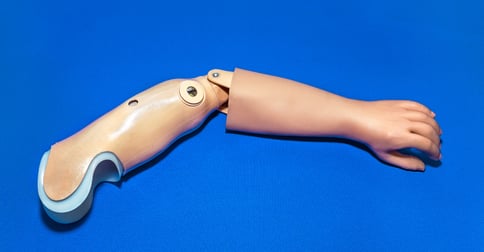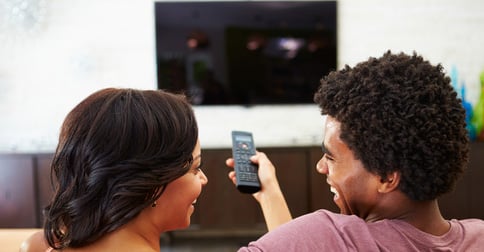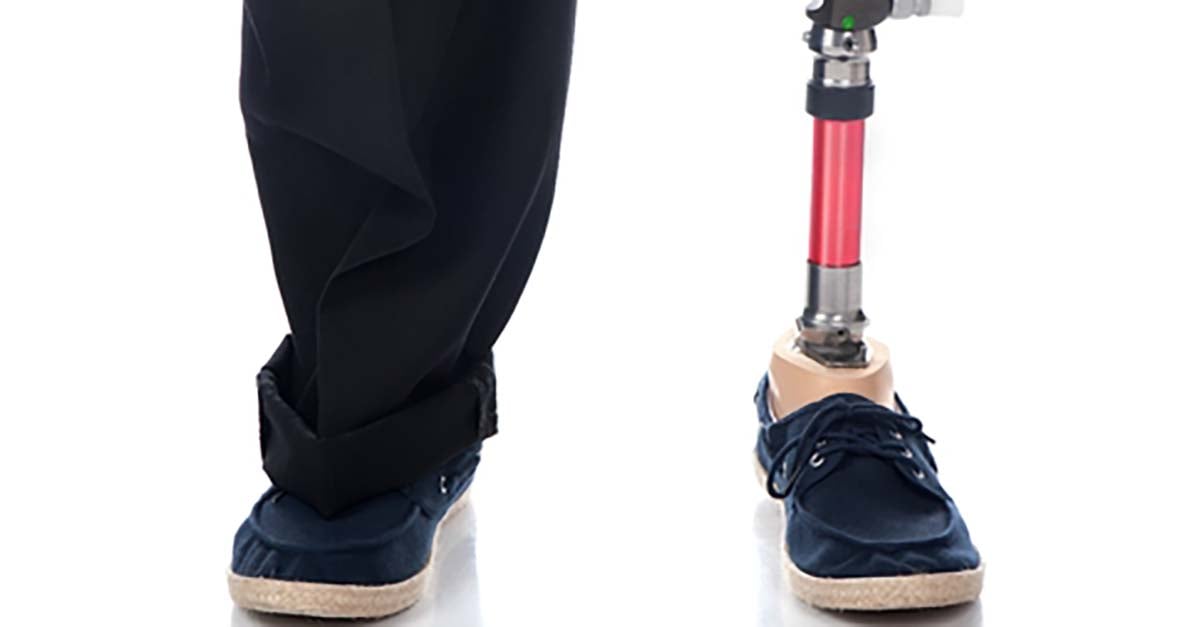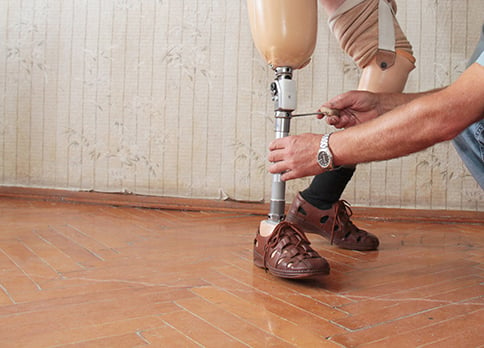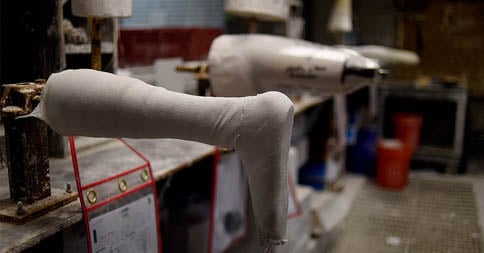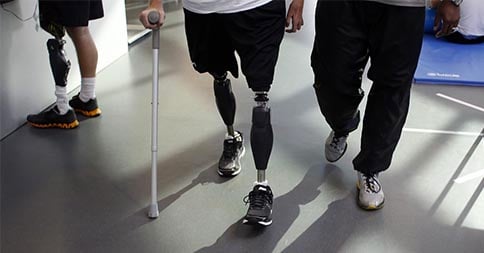The field of prosthetic devices has made some pretty incredible leaps and bounds lately. From 3D printed prostheses to devices that connect directly to your brain, prosthetic technology looks pretty promising for the future. Read on!
Civil Beginnings
The use of prosthetic devices first became widespread in the United States during the Civil War. The amputation of a ruined limb was the most efficient way to prevent gangrene, and about 60,000 amputations were done by both sides of the war, with a survival rate of 75%. The demand for prostheses went off the charts after the war had ended -- so much so that the government began offering more money to veterans to pay for their artificial limbs.
After that, from World War I all the way to our present military conflicts, prosthetic devices continued to see increased demand and progressively better technology. New materials were used, and the devices became lighter and more comfortable. Today, prosthetic limbs have reached a new level of function and comfort -- and that progress is only going to continue.
Investing in the Future
Since 2006, the Defense Advanced Research Projects Agency has invested $144 million in prosthetic research for the benefit of the estimated 1,800 U.S. soldiers who have lost a limb. Some of that money went into an invention by Hugh Herr -- a bionic ankle for people who have lost one or both legs below the knee. This device actually propels its wearer forward as they walk, which helps them conserve and regain lost energy.
Herr hopes that one day, users can simply attach their device to a bone via a titanium rod, merging the device with their body almost seamlessly.
Seamless Integration
Herr isn’t the only one with high hopes for this kind of thing. Michael McLoughlin, who works as the engineer leading the development of advanced prosthetics at Johns Hopkins University, works to create a more streamlined integration of prosthetic devices with human bodies. The Johns Hopkins lab has built a Modular Prosthetic Limb (MPL), an arm-and-hand device that has 26 joints controlled by 17 separate motors and functions almost exactly like a natural limb.
McLoughlin is looking for a way to speed up the device’s connection with the nervous system -- possibly connecting it directly to the brain. Fortunately for him (and us), researchers at Brown University actually did this when they hooked up a robotic arm directly to the brain of a 58-year-old quadriplegic named Cathy Hutchinson. As evidenced on the video results, Cathy was able to pick up a bottle and drink from it.
BioTech Has the Best in Prosthesis Technology
Here at BioTech, we love to watch the world of prosthetic devices progress to such exciting heights! From the BioTech BioSystem to carbon technology, we’re passionate about providing the latest and greatest devices for your needs. Contact us today!
#1: Ash’s Chainsaw Hand in Evil Dead 2
This over-the-top prosthetic device that replaces Ash’s hand is delightfully unbelievable -- and even more delightfully handy when it comes to killing hordes of undead. We’re not totally sure how practical it’d be in everyday life, unless you were a lumberjack, in which case it might make you the most efficient lumberjack in the world!
#2: Edward Scissorhands’ … Well, Scissor Hands, in Edward Scissorhands
Coming in a very close second to the chainsaw are the twin collections of rusty blades Edward uses as hand prostheses in the movie Edward Scissorhands. They might seem a bit hard to control, but Edward manages to make them look downright graceful, especially when he’s ice-sculpting.
#3: The Captain’s Hook in Hook
You had to see this one coming! There might not be a more famous prosthesis in the world than Captain Hook’s famed hook-hand. What’s more, there might not be a catchier prosthesis-themed title than Hook. Again, it might not be the most practical hand prosthesis ever (how in the world do you grip things?), but Hook’s hook is certainly a cultural icon.
#4: Mr. Igoe’s Entire Wardrobe of Hands in Innerspace
When one hand prosthesis just won’t do, the only option is to have a whole collection of them. Mr. Igoe has a wide variety of hands to choose from, including one that shoots bullets and another that doubles as a flamethrower. The possibilities are endless!
#5: Wolverine’s Claws in X-Men
Okay, this might be a bit of a stretch as far as the word “prosthesis” goes, but Wolverine’s retractable claws are the definition of awesome! They’re easy to stow away when you don’t need them (although it can’t exactly be comfortable to have ten-inch blades lodged somewhere inside your forearm), they’re basically indestructible, and they’re the clear winner when it comes to dropping jaws.
Need a Functional Upper Extremity Prosthesis? Call BioTech!
Listen, we’d all like to be Wolverine, but when it comes to real-life hand prostheses, retractable claws aren’t as cool as they look!
If you're in need of an upper extremity prosthesis (or any other prosthesis), BioTech is the place for you. We offer pre-amputation consultations, immediate postoperative prostheses, and expedited fittings for out-of-town patients -- plus so much more. Contact us today!
So you think you know a lot about prosthetic devices, do you? From fingers to legs to arms, there certainly is a lot to know! Check out our collection of fun facts about prostheses and see if your knowledge matches up with ours!
Q: What does the word “prosthetic” mean?
A: “Prosthetic” is a Greek word that means “addition.” Pretty appropriate, huh?
Q: How much do the most expensive prosthetic devices cost?
A: A prosthesis can cost up to $100,000 (but 3D printing may be changing all that). Yikes!
Q: What is the ratio of males to females with amputations?
A: 77% of all amputations are performed on males! This doesn’t take into account people who are born without limbs, though.
Q: What is the top cause of amputations?
A: Most amputations are performed because of cardiovascular disease, diabetes, or other health conditions.
Q: What was the first recorded prosthetic device?
A: It was a big toe on an Egyptian noblewoman! We actually did a blog post about her.
Q: How many people in the United States are amputees?
A: This number may be higher than you expect. 1 out of every 200 people in the United States has had an amputation.
Q: Who is the best company for prosthetic and orthotic devices in the state of Alabama?
A: BioTech, of course! We have all kinds of cool technology to make your prosthesis as comfortable as possible, and we do expedited fittings, too.
BioTech is passionate about helping you live your life to the fullest after limb loss. Who says you can’t be active, energetic, and comfortable? Contact us today for help and advice with your device -- we are dedicated to serving our patients as if they were family!
After you’ve lost a leg, it’s normal to want to be fitted for a prosthesis and learn how to walk on it as soon as possible. But it’s important to remember that learning to walk with a prosthesis is a brand new skill you’re going to acquire, which means it’ll take a little time! It may be several months before you gain the strength and coordination you’ll need to use your prosthesis on a daily basis.
Keep reading to learn what is involved in this process and what you should expect from yourself, your new leg, and the entire experience.
Fit Is Key
As you’re being fitted for your new leg, remember that this is one of the most -- if not the most -- important part of the process! A comfortable, secure fit between your residual limb and the socket of your prosthesis is essential for successful daily use.
Proper maintenance also affects the way your prosthesis fits. Clean the socket regularly so your skin won’t get irritated, and be sure to take the weather into account as you venture outside.
Bearing Weight
After your prosthesis has been expertly fitted to your residual limb, you’ll be ready to start transferring some weight onto it. This is a crucial part of learning how to walk again. For many people, this is the hardest part of the whole experience because they’re not confident enough to put all their weight on the prosthesis as they walk.
One way to gain confidence is by using parallel bars and supporting your bodyweight with your arms. Soon, you’ll be able to use only one arm to support your weight, and you’ll begin to put more and more weight on your prosthesis as time goes by. If your leg was lost above the knee, you’ll have the additional challenge of learning to walk with an artificial knee joint -- but the process is essentially the same. You’ll bear more weight on your prosthesis each day until finally, you’re walking all by yourself!
Walking Successfully
Once you’ve begun walking on your own, make sure you continue to use any aids recommended by your doctor or therapist. The last thing you want to do is take it too fast and end up hurting yourself!
As you’re walking in everyday situations, you’ll encounter things that will challenge you, like stairs, curbs, and uneven surfaces. Take it slow and let your therapist help you learn to navigate these various terrains. There is no rush! Be sure to give yourself the time and space you need to get comfortable with all of this. It won’t be an instant result, and that’s okay.
Contact BioTech for Prosthesis Information
There are many more tips we could give you about learning to walk with a prosthesis! Contact us if you have questions, worries, or if you simply need a knowledgeable professional to help you get started walking again. We are here for you!
Your body has recovered from limb loss, you’ve adapted to your new prosthesis, and you’re ready to get back out into the world. That’s great! But you may be feeling a little anxious about your plans to travel after limb loss. What challenges will you encounter? How many accessibility obstacles will you run into on your trip?
Don’t worry -- there are plenty of resources out there to ease your worries! The more you know what to expect, the less afraid you’ll feel. After all, knowing is half the battle, right? (Thanks, G.I. Joe.)
Here are three great resources for anyone who’s preparing to travel after limb loss.
Access Anything
Access Anything’s mission is to enable people with disabilities to live a full, unhindered life through adventure and travel. They’re passionate about improving accessibility in the travel industry, and they actively spread awareness about this need through consultations with industry professionals, motivational speaking, and general education.
Easy Access Travel
Easy Access Travel specializes in cruise vacations and packaged land tours for mature and disabled travelers. They research vacation options for their clients and give them information to make their trip enjoyable instead of frustrating. A large part of this is eliminating potential surprises so that their clients know what to expect on their trip.
Amputee Coalition Travel Adventures
ACTA focuses specifically on cruise and land vacation packages for people with limb loss. Their trips are led by Debra Kerper, who has traveled to more than 30 countries and enjoyed more than 75 cruises as a below knee amputee. Their website has a list of upcoming adventures specifically designed to be accessible for people with limb loss.
BioTech Limb and Brace Can Help You Travel After Limb Loss!
At BioTech, our patients become our family. If you’re ready to start venturing into the world again, give us a call with any questions you have. We are here to help!
Getting a new prosthesis isn’t the easiest thing in the world, but moving forward into a full, joyful future is possible! One of the best things you can do for your new body is to ensure your prosthesis fits perfectly; however, it can be a bit of a challenge to zero in on that ideal fit. So how do you make sure your device fits the way it should?
Good news! The dedicated professionals at BioTech Limb and Brace, your Birmingham prosthetic and orthotic device experts, are here with three tips to simplify the fitting process.
Take Your Time
Staying patient through the fitting process can be hard. You probably won’t get a perfect fit the first time; in fact, it might take several adjustments before your prosthesis feels and operates the way it should. You may get frustrated and try to speed up the process, but this will only result in a poorly-fitting device that isn’t comfortable and doesn’t meet your needs.
Keep in mind that your new prosthesis is a complex system of moving parts, and it’s going to need some tweaking before it jives perfectly with your residual limb! Even if the process takes a few weeks, it’s worth it because you’ll avoid the fatigue and discomfort that accompany a bad fit.
Don’t Ballpark It -- Pinpoint It!
When you’ve already been through three fittings, a fourth can seem about as much fun as a root canal. You may be tempted to throw in the towel and deal with a little discomfort just for the sake of being done. Don’t give in! If you’ve already had a few adjustments made, chances are you’ll strike gold sooner than you think -- maybe even at your next visit!
Wondering if your prosthesis fits like it should? Ask yourself how your body feels and functions on an everyday basis. If you’re struggling with your device, feeling fatigued, or having trouble with balance, you’re probably not there yet. Keep going! Just a few more hours of fittings could result in years of higher-quality life.
Call the Experts at BioTech Limb and Brace in Birmingham, Alabama!
Hitting the bullseye on that perfect fit requires the help of a qualified prosthetist. The professionals at BioTech Limb and Brace treat patients like family and won’t give up until your prosthesis fits just right. Contact us today!
Gait refers to the way a person walks from speed and step length to posture and limb positioning. Those who have experienced amputation or limb loss often find it challenging to regain a normal gait pattern. In this case, “normal” refers to a pattern that is symmetrical and fits in with the average pattern.
The more invasive the amputation, the more likely a patient is to experience a limp. Muscles may lose their strength, and sensory receptors may stop working. For this reason, a patient may appear unstable and unbalanced.
How to Maintain a Normal Gait Pattern
It takes a great amount of energy to compensate for weakness in your gait pattern. For this reason, it is important to talk to your orthopedic specialist about appropriate pre- and post-amputation exercises. Therapeutic exercises will help you regain stability.
Using parallel bars, walkers, crutches, or treadmills, many patients who wear a prosthesis or other orthopedic devices learn to walk with a cane, and then with no aid at all. No matter how long you have worn your orthopedic brace or prosthetic device, it is vital to periodically check on your gait pattern.
For athletes, gait pattern is extremely important. If you wear a running prosthesis, your gait may be different when you are running versus when you are walking. With help from professionals, you can work on both patterns.
BioTech Limb and Brace in Birmingham, Alabama has the experience you need!
The passionate professionals at BioTech Limb and Brace have years of experience with patients of all ages. Our goal is for every patient to receive custom, tailored care. Learn more about how you can benefit from seeing a BioTech specialist. Contact BioTech Limb and Brace today!
At BioTech, we are committed to helping our patients receive excellent, personal, and affordable care. Although prosthetic and orthotic devices can significantly help improve functionality and comfort, we realize that they can be an expensive investment.
Take a minute to learn more about insurance coverage for prosthetic and orthotic devices from the BioTech Limb and Brace team.
Does My Insurance Cover That?
Depending on your health insurance provider, your pre-existing conditions, and a variety of other factors, coverage for these devices vary. Most insurance companies have policies that will cover some of your costs; however, devices that are used primarily for cosmetic appearance rather than for practical function are typically not covered.
Similarly, developed devices that require advanced technology may be more expensive and therefore may not be covered by your insurance company.
With any policy, there are often limitations on what is covered. Therefore, the best thing to do is to consult with both your personal prosthetist and your insurance company to determine what your insurance will cover and what you may have to pay for out-of-pocket.
How Do I Get My Coverage?
To get your device covered, you will have to file a claim with your insurance company. This often involves an extensive process that takes a good bit of time and paperwork.
At BioTech Limb and Brace, we will try our best to help you make that process as simple and stress-free as possible. We are here to help you get the treatment you need to recognize and achieve your possibilities.
BioTech participates with most major insurers. Learn more about cost and insurance when you work with BioTech Limb and Brace - we will always work with you and provide you with a custom evaluation and rough estimate so that you are prepared when you talk with your insurance company.
Let BioTech Help You!
To prepare for your new prosthetic or orthotic device, speak with one of our experts. We are here to answer all your questions about healthcare insurance. Contact BioTech Limb and Brace for more information today.
 Have a prosthesis? It’s essential to keep it clean. BioTech Limb and Brace is here with tips for cleaning your device and helping to protect the skin that comes into contact with your socket.
Have a prosthesis? It’s essential to keep it clean. BioTech Limb and Brace is here with tips for cleaning your device and helping to protect the skin that comes into contact with your socket.
Cleaning the Socket
The inside of your socket should be cleaned at least once a month to prevent bacterial growth. The best and easiest way to manage this is with a canister of antibacterial wipes. If you run out of wipes or you find that your skin reacts negatively to any particular product, try a light hypoallergenic soap and a minimal amount of water.
Then, pat your prosthesis dry with a towel, then let it air dry until it is completely dry. Make sure to let your prosthetic leg dry completely before wearing it again or else you could trap in moisture.
You also don’t want the gel liner to harbor any type of bacteria. Therefore, remember to clean this area by turning it inside out and spraying it with isopropyl alcohol. As with the rest of your device and then allow it to air dry.
Use Baby Powder
To help maintain your device and keep it from retaining moisture, you can use a little baby powder (if you are not allergic to talc).
Sometimes maintenance may no longer be sufficient and it is time to get a new prosthetic device. Read one of our latest blogs to learn when you need a new custom prosthesis and then turn to BioTech Limb and Brace in Birmingham, Alabama to get the perfect fit!
Need Help? Consult An Expert
If you need to make any adjustments beyond basic cleaning, then make sure you turn to our team at BioTech. Let us help with adjusting and caring for your prosthesis.
The professionals at BioTech Limb and Brace are here to help make the process as easy as possible. Get the care and professionalism you deserve. Contact BioTech Limb and Brace today.
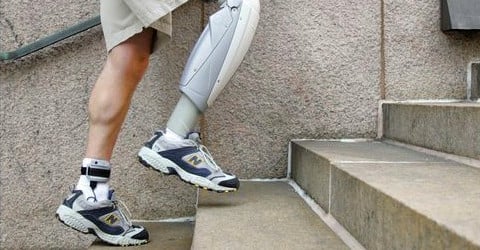 Getting custom orthoses or prostheses can seem like an overwhelming process. Don’t worry, BioTech is here to describe what your first appointment will be like to help ease your mind.
Getting custom orthoses or prostheses can seem like an overwhelming process. Don’t worry, BioTech is here to describe what your first appointment will be like to help ease your mind.
At BioTech, we are committed to a comfortable, expectation-surpassing experience every single time you visit. We truly view our patients as family and will do everything in our power to help you get the help you need for achieving your dreams!
What Should I Expect?
We take our work personally. We are here to make sure that every part of the process is tailored to your needs and desires. For this reason, the first appointment is dedicated to getting to know you as a patient and as a person.
We will ask you a series of questions. We need some insight to your personality and lifestyle. Depending on how active you are, we can provide the right orthoses and custom prostheses. We will analyze your needs and work our hardest to provide the most appropriate and effective solutions.
Is a Fitting First?
It depends on your residual limb. If you have recently experienced limb loss, the swelling of your residual limb will need to time to decrease and heal. A fitting involves measuring your limb and creating a cast as a mold for your new device. For the most accurate measurements, it is important to wait until the swelling has gone down.
At BioTech Limb and Brace, we offer expedited fittings. With advanced technology, we are able to get you in and out of the office in no time. These expedited fittings for patients coming from out of town are key! We want to make sure that we are efficient and timely.
During the fitting, we will use image capture interface model development and utilize diagnostic socket fitting and alignment to help you get the perfect fit. Then, we deliver your finished device, orthosis or prosthesis with care.
Make Your First Appointment Today!
Recognize your possibilities with BioTech Limb and Brace in Birmingham, Alabama today. We are here to help you achieve your dreams with a custom fitted prosthetic or orthotic device. Contact BioTech Limb and Brace today to learn more about how we can help you realize your possibilities with our dedicated team.
